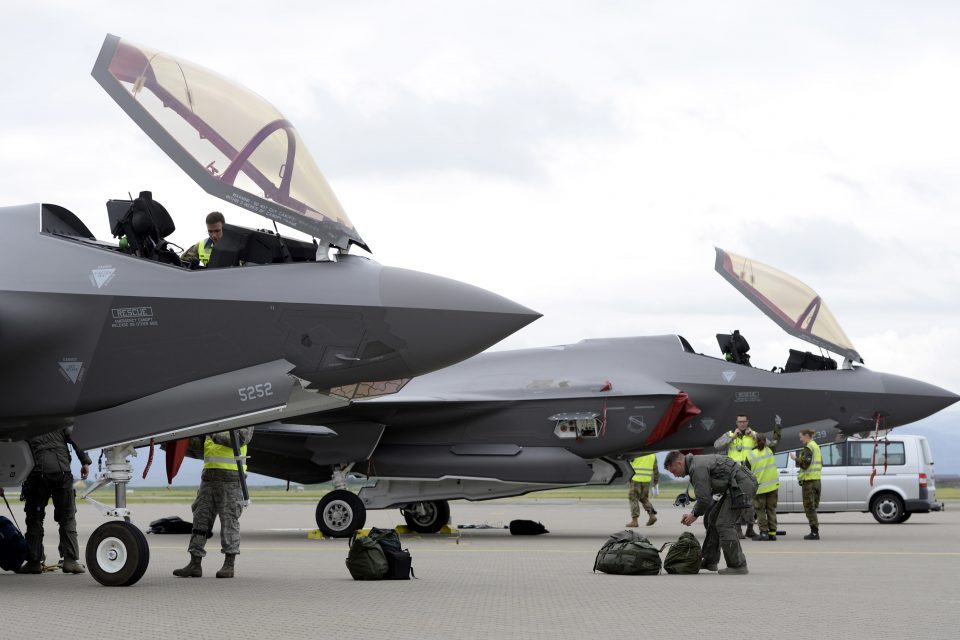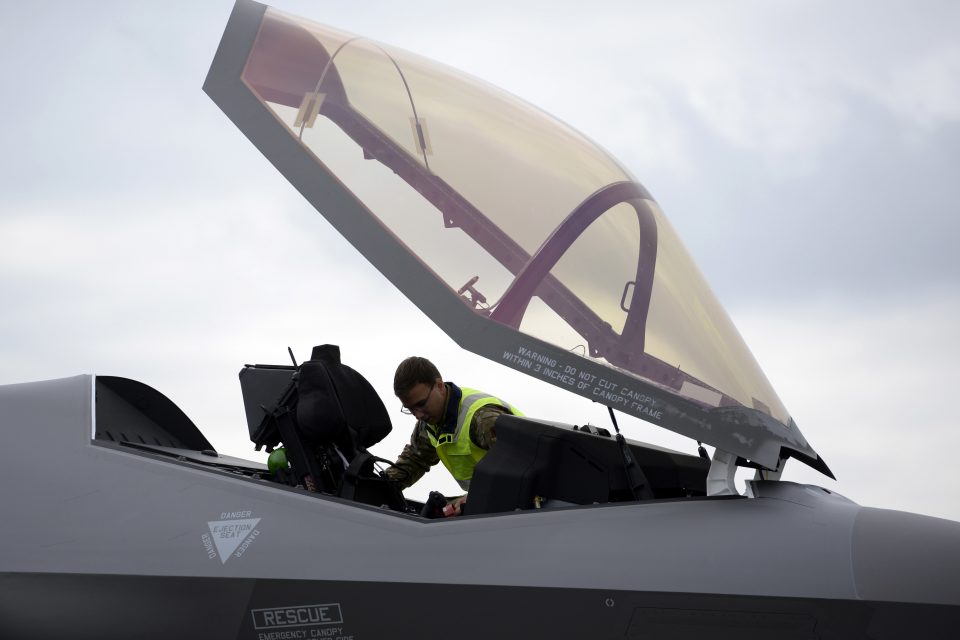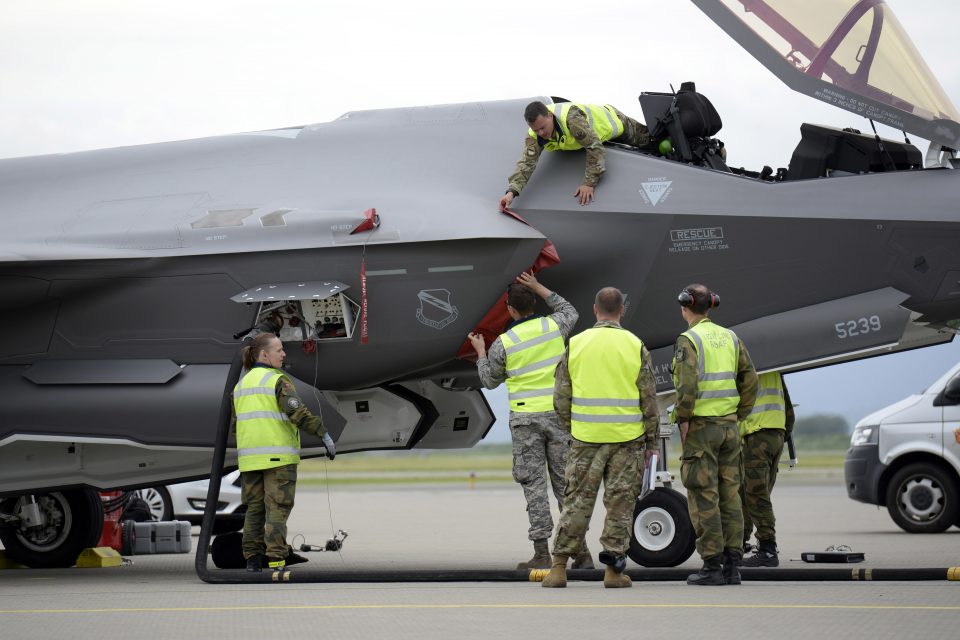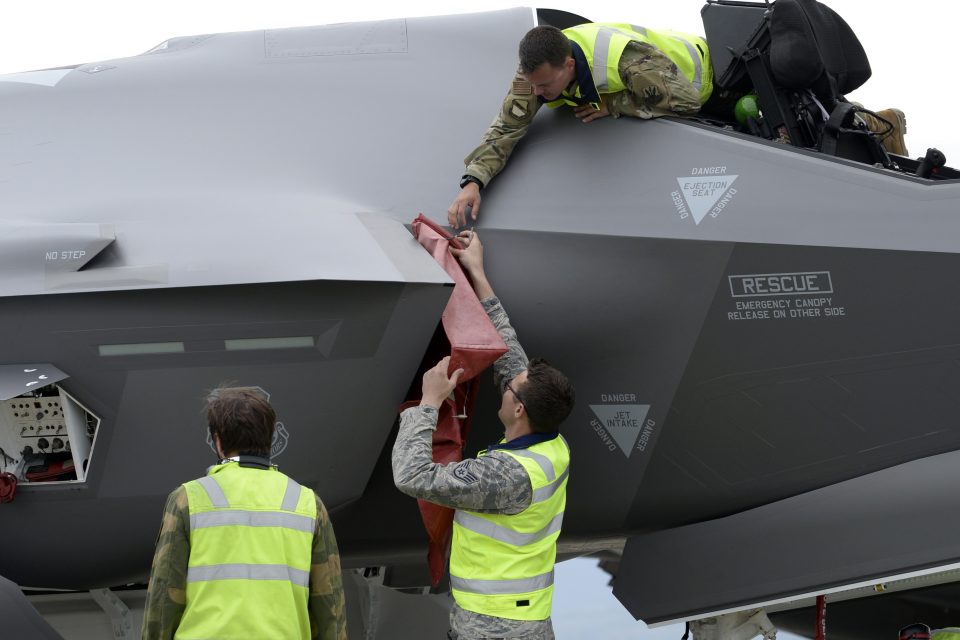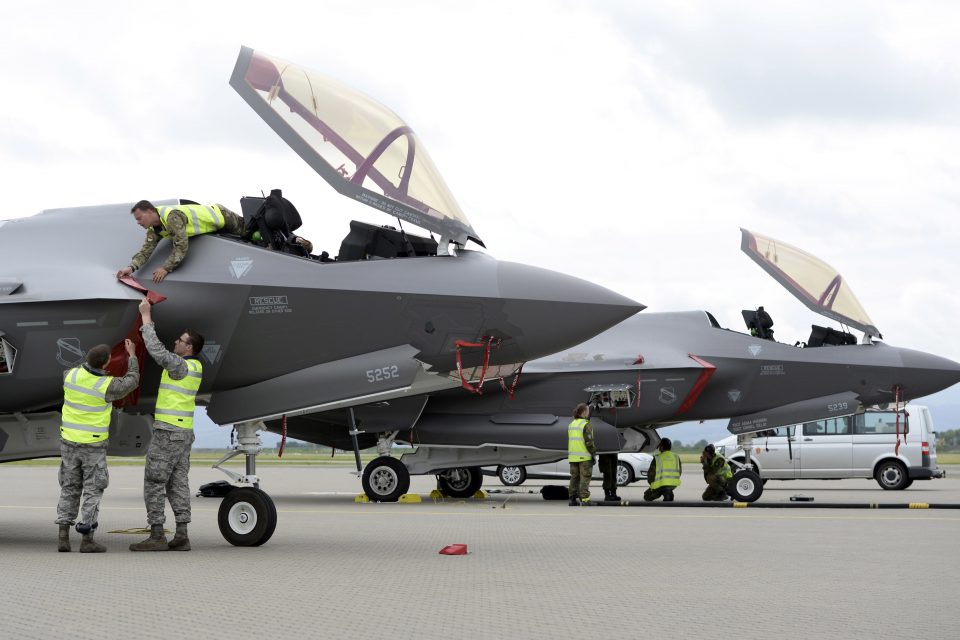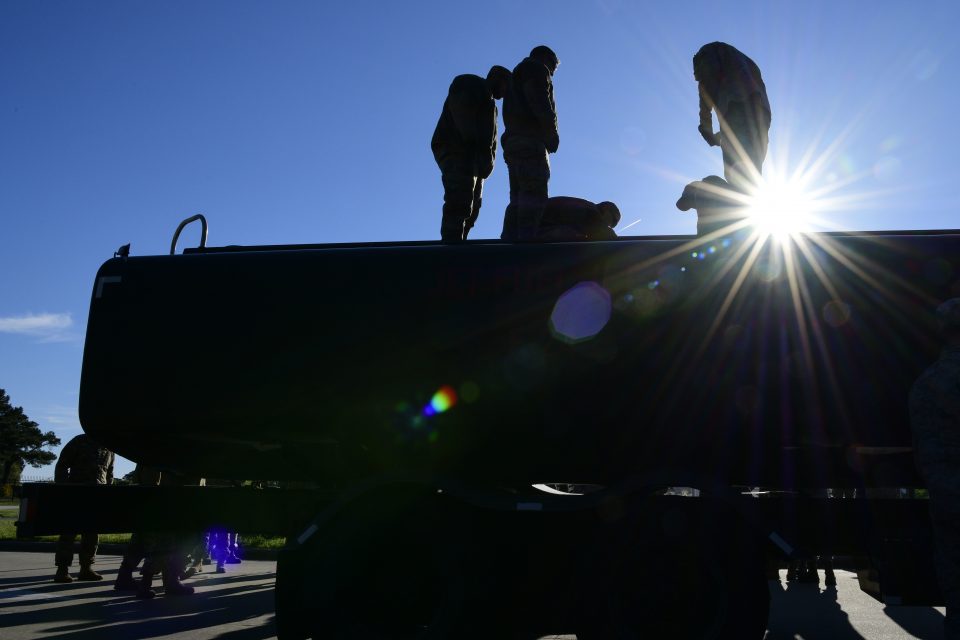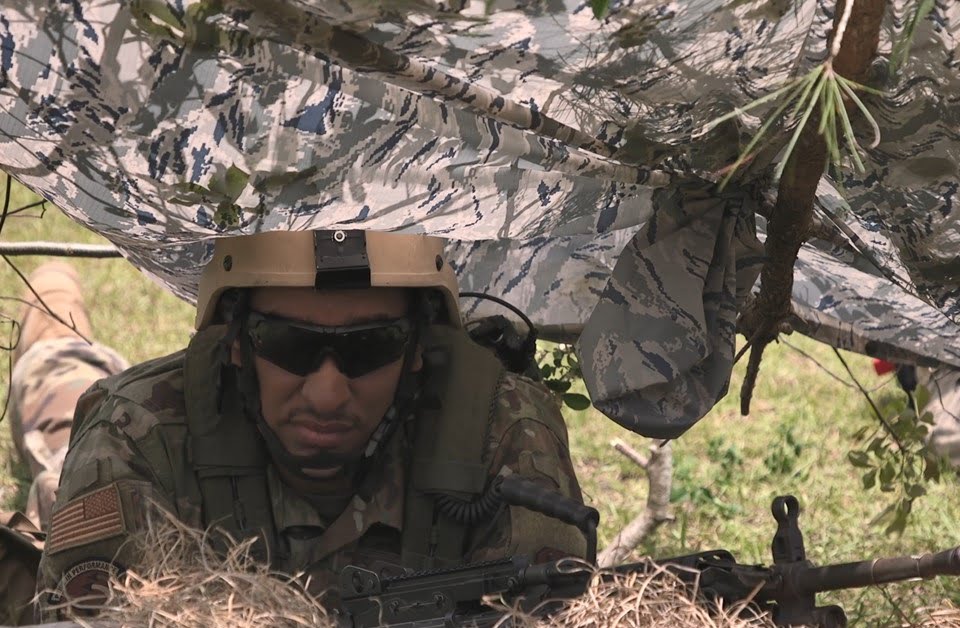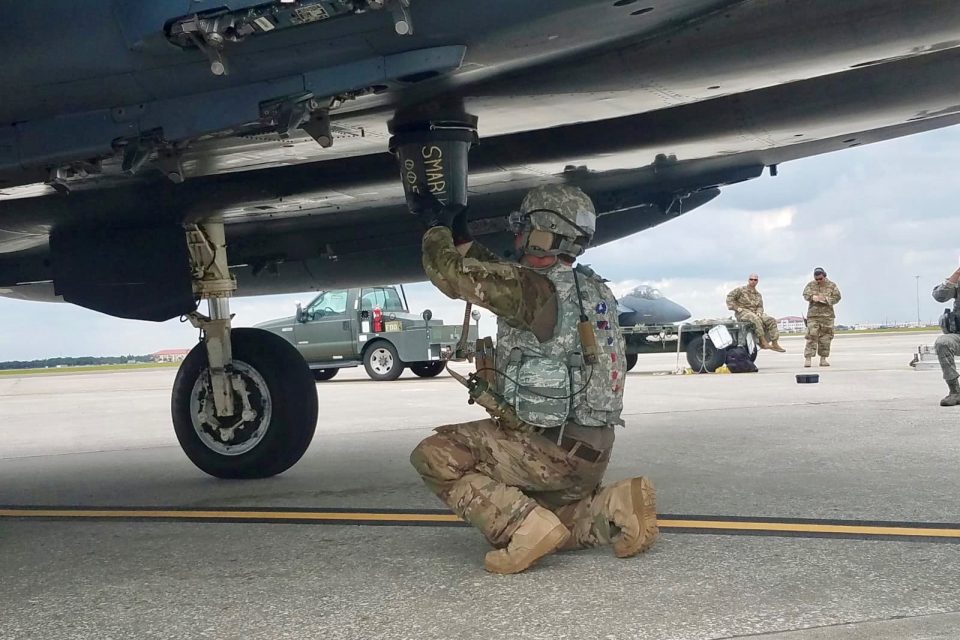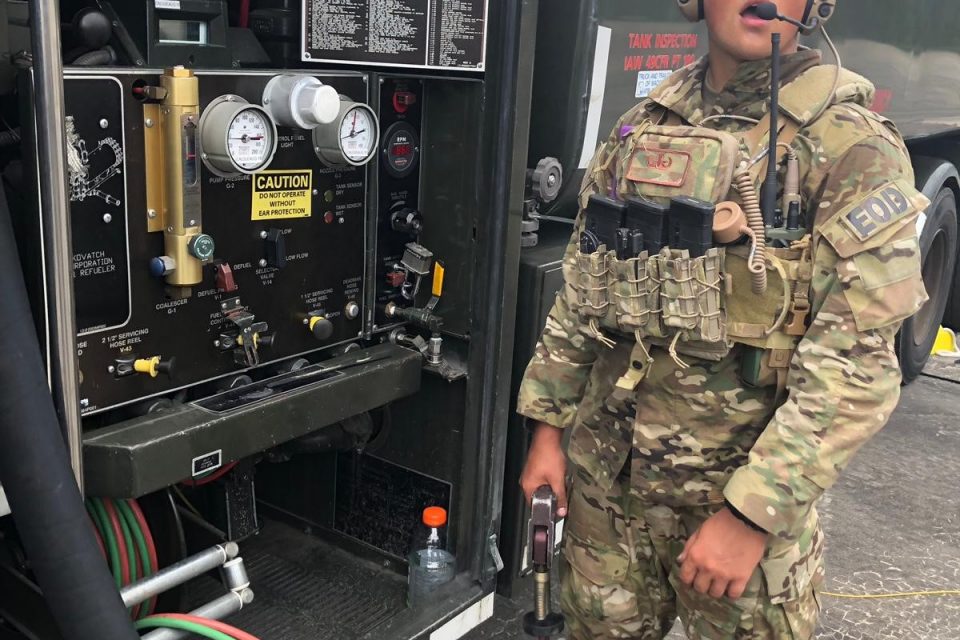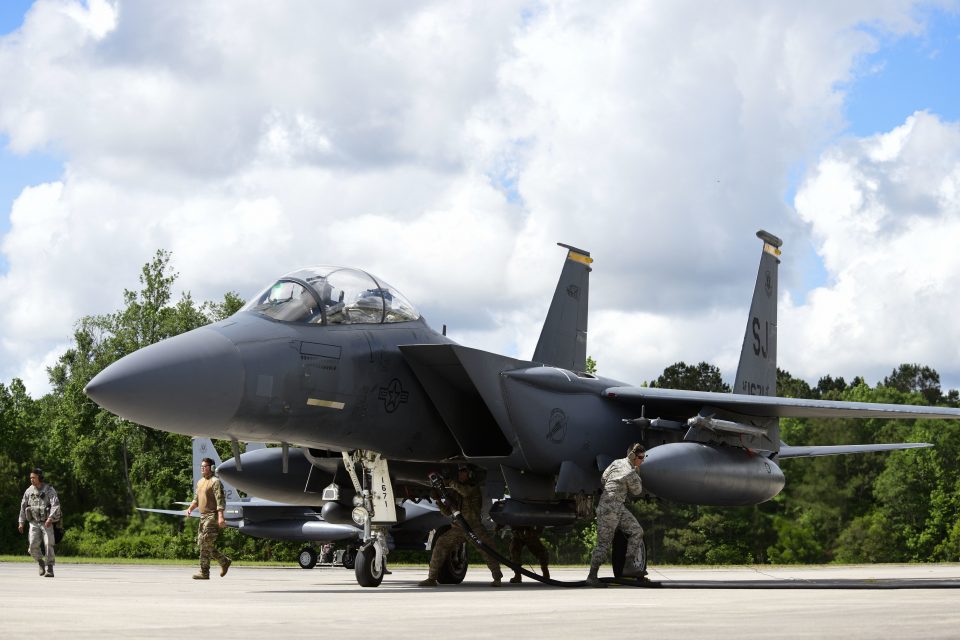As Europe adds new F-35 capabilities to its combat forces, there is a clear opportunity for U.S Services which fly the F-35 to work a very different approach to providing for enhanced and time urgent combat power.
With a sustained engagement strategy, the USAF, USMC and the US Navy could leverage regional partners sustainment resources, including maintainers and stockpiled parts to ensure an ability to fly to the fight, rather than to have to bring the flying warehouse of C-17s, C-15s, and C-130s and tankers with them.
Three recent events highlight the possibility.
The first is the USAF flying to Orland Air Base
In story published on June 17, 2019, the USAF highlighted this event as follows:
ORLAND AIR BASE, Norway – For the first time outside the U. S., Norwegian and American F-35 Lightning II maintainers worked together on their aircraft June 17, 2019.
A team of five maintainers and four pilots from the 421st Expeditionary Fighter Squadron deployed to Norway for the historic cross-servicing event, during which the maintenance teams received and turned two American F-35As after their arrival from Finland.
The Norwegian air force already operates a fleet of 12 F-35s at Orland Air Base, and plans to eventually employ 52 of the fifth-generation aircraft throughout Norway. The visit was the first time American F-35s have landed in Norway.
“All firsts are special,” said Royal Norwegian Air Force Lt. Col. Eirik Guldvog, 132nd Air Wing executive officer and chief of staff. “For Norway and our European allies, who are entering the fifth-generation fighter era, it’s important to both have the U.S. on board and to train with the other partners around the North Sea.
“To have multinational cooperation within these nations and to have a significant F-35-capable force in the North Atlantic, of course that is important,” Guldvog continued. “This is the first step.”
While the visit was short, it was an opportunity to practice seamless integration in preparation for future deployments.
“Air operations are often multinational, so it’s important that we train together and find every opportunity to interact on a normal basis,” Guldvog said.
According to U.S. Air Force Capt. Brett Burnside, 421st EFS F-35 pilot, the entire endeavor felt familiar and without any significant challenges.
“Even though they are from a different country and speak a different language, they are fighter pilots as we are,” Burnside said. “We simply connected with them on our F-35 datalink and it was just like working with any U.S. F-35 unit.”
Burnside said because Norway is a partner in the F-35 program, it’s extremely important to continue to foster this relationship. Additionally, he said Norway’s geographic location is immensely strategic as they have a large responsibility in quick reaction alert to scramble fighters to intercept hostile aircraft in the arctic region if necessary.
The now-proven ability of RNorAF’s Lightning II maintainers to successfully catch and turn American F-35s is a huge milestone for the country.
“F-35s will be the most important combat element within the Norwegian defense agencies,” Guldvog said. “Not just the air force. It will be the most potent offensive capability in Norway.”
A fleet of F-35As is currently deployed to Europe as part of the European Deterrence Initiative, which enables the U. S. to enhance a deterrence posture, increase the readiness and responsiveness of U.S. forces in Europe, support the collective defense and security of NATO allies, and bolster the security and capacity of U.S. partners.
The second involves the current Operation Rapid Forge where the USAF has brought F-35s to Poland for the first time. As Poland is expected to buy the aircraft, in the future, Polish hardened air bases defended by their increasingly capable active defense systems can provide an opportunity for the USAF or other European F-35 partners to fly to the deterrent effort if the Russians are threatening the Baltics or Poland.
According to a a USAF story published on July 16, 2019:
U.S. Air Force fighter and mobility aircraft deployed to bases in Poland, Lithuania and Estonia today as part of Operation Rapid Forge, a U.S. Air Forces in Europe-sponsored training event designed to enhance interoperability with NATO allies and partners, improve readiness and sharpen operational capabilities.
F-35 Lightning II fighter jets, F-15E Strike Eagles, and C-130J Super Hercules aircraft arrived at Powidz Air Base, Poland, to conduct refueling and re-arming operations using inert munitions.
F-15E Strike Eagles and C-130J Super Hercules aircraft arrived at Siauilai AB, Lithuania, also to conduct refueling and re-arming operations using inert munitions.
F-15E Strike Eagles and MC-130J Commando II aircraft arrived at Amari AB, Estonia, to conduct refueling operations.
The ability to operate at forward locations enables collective defense capabilities and provides the U.S. and NATO allies the strategic and operational breadth needed to deter adversaries and assure our allies and partners.
The F-35s are deployed from the 388th and 419th Fighter Wings at Hill AFB, Utah. F-15E Strike Eagles are deployed from the 4th Fighter Wing, Seymour Johnson Air Force Base, N.C. Both squadrons of fighter jets are operating out of Spangdahlem AB, Germany. The MC-130J aircraft are from the 352nd Special Operations Wing at RAF Mildenhall, England, and the C-130J aircraft are deployed from the 317th Airlift Wing at Dyess Air Force Base, Tex., and are operating out of Ramstein AB, Germany
The third event occurred in May of this year where the USAF worked new approaches to adaptive basing.
According to a USAF story published on May 14, 2019:
KINSTON REGIONAL JETPORT, N.C. – The Air Force completed the final test of an innovative warfighting concept May 12 that could be a game-changer for future adaptive-basing constructs.
The Combat Support Wing proof-of-concept capstone exercise developed by the Air Force Installation and Mission Support Center and hosted by Air Combat Command’s 4th Fighter Wing at Seymour Johnson Air Force Base, North Carolina, tested the ability of three teams of about 30 Airmen each to establish and operate an airfield in an austere environment. They had to defend the base and refuel and rearm F-15E’s using multifunctional skills they learned during training events over the past month.
“We’ve seen monumental improvements in the ability of our Airmen to do things outside of their normal career fields and the speed at which they’re able to refuel and rearm jets,” said Brig. Gen. Brian Bruckbauer, AFIMSC director of Expeditionary Support and Innovation. Bruckbauer’s directorate led the planning and execution of the exercise.
The concept supports National Defense Strategy priorities to evolve innovative operational concepts and enhance lethality in contested environments. If fielded, the CSW concept could give the Air Force the ability to rapidly deploy in smaller, more efficient and agile teams to austere and potentially contested areas. Under the multifunctional construct, weapons loaders could drive a refueling truck, security forces defenders could refuel a jet and avionics specialists could provide airfield security while also performing their primary duties.
CSW is an outcome of the 2017 AFIMSC Installation and Mission Support Weapons and Tactics Conference. The capstone was the final event in a phased rollout of the concept over the past year. It tested the hub-and-spoke operations of a single forward operating base at Seymour Johnson and three forward operating locations at Kinston, Moody AFB, Georgia, and MacDill AFB, Florida.
“We had at least 15 different Air Force Specialty Codes come in to attack the problem of how to conduct integrated combat turns with as few people and the smallest logistics footprint as possible,” said Col. Erik Rundquist, commander of AFIMSC Detachment 8 at Langley AFB, Va., who was one of the primary architects responsible for turning the concept into practicable exercise scenarios.
Master Sgt. Jason Knepper, an Air Force Security Forces Center flight chief, joined the CSW cadre in January as a security forces functional lead. He said he’s seen “tons” of progress since capstone participants began training in mid-April.
“We went from individual troops who had their skillset and a vague understanding about what everyone else was doing to now where you’ve got maintainers manning defensive fighting positions and cops helping refuel jets,” Knepper said. “The construct for the multifunction approach is working really well. The people who built those pieces did a phenomenal job and now we’re seeing it work.”
He said Airmen can execute the concept very well when given the opportunity, training and motivation to see why it’s important. One of those Airmen was Senior Airman Darian Betancourt, an aircraft armament systems specialist at the 4th Fighter Wing. He learned how to drive R-11 fuel trucks, palletize cargo, conduct tactical combat casualty care and defend the base.
“It’s been different. It’s been fun too,” Betancourt said. “You gain appreciation for your job and other people’s jobs and you learn what they do.”
He said the experience was eye-opening.
“There’s so much to the Air Force that people don’t get to see and doing something like this really shows that,” Betancourt said. “If everybody could do this (multifunctional learning), that would be something special.”
The AFIMSC Expeditionary Support Directorate will now produce a report for Air Force leaders that includes data on more than 100 measures of effectiveness.
“We’ll be able to provide our senior leaders with a very thorough analysis and some very good recommendations going forward on force structure, force presentation and multi-functional training with the goal of using this concept in our operational plans,” Bruckbauer said.
The CSW concept will be included in the Rapid Forge exercise taking place July 10-26 in Europe.
The featured photo shows a U.S. Air Force F-35A Lightning II aircraft sitting on a runway during Operation Rapid Forge on Powidz Air Base, Poland, July, 16, 2019. This is the first time that an U.S. Air Force F-35A Lightning II aircraft has landed in Poland. Rapid Forge is a U.S. Air Forces in Europe-led mission to enhance readiness and test the ability to function at locations other than the main air bases. (U.S. Air Force photo by Senior Airman Milton Hamilton)



